AMN10 - Annual Report 2023
12 April, 2024
New funding initiatives, biggest ever AMN10 outreach programme and the conference's first ever commercial stream.
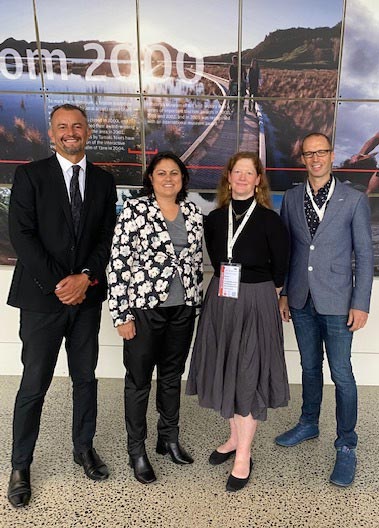
Minister for Research, Science and Innovation, Hon Dr Ayesha Verrall with Institute Board Chair Hēmi Rolleston and Co-Directors Nicola Gaston and Justin Hodgkiss
After four years of COVID-related postponements, we held the tenth in our series of Advanced Materials and Nanotechnology conferences (AMN10) in Rotorua in February. The conference was attended by nearly 500 scientists, mostly from overseas, who were welcomed with a pōwhiri from Ngāti Whakaue. In her opening speech, the Minister for Research, Science and Innovation, Hon Dr Ayesha Verrall, announced new initiatives supporting Māori and Pacific people into the Research, Science and Innovation (RSI) system and workforce. The Minister congratulated the Institute for leadership in this space, citing our longstanding DiscoveryCamp, and commended the Institute for our Discovery Scholarships for undergraduate students in physics, chemistry, and materials engineering.
The opening ceremony and welcome from Ngāti Whakaue set the stage for collaborative discussions that embraced Mātauranga Māori and acknowledged longstanding partnerships, particularly with Whakarewarewa Village. Keynotes by Deputy Director Māori Associate Professor Pauline Harris and Dr Charles Royal illuminated historical contexts and the symbiotic relationship between indigenous wisdom and scientific advancements.
Dr Charles Royal's thought-provoking keynote delved into Mātauranga Māori, referencing the science and Mātauranga Māori debate initiated by non-Māori academics the previous year. Charles' address underscored the importance of respectful dialogue and collaboration between diverse knowledge traditions, while Pauline's talk described the context of Māori in science and the initiatives that have been developed by the MacDiarmid Institute to develop capacity and capability in sciences in the MacDiarmid Institute.
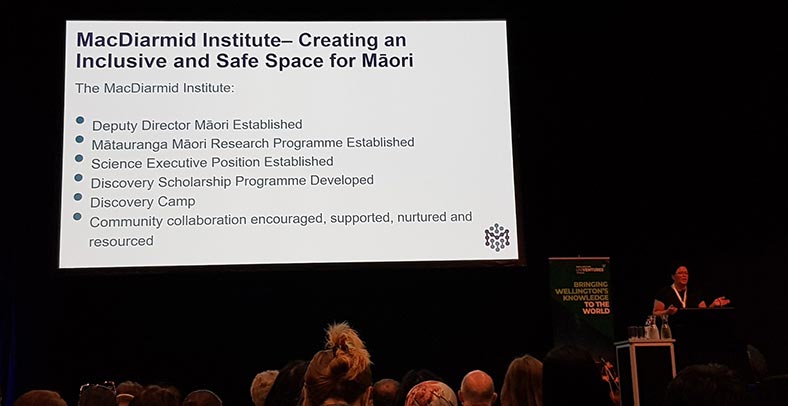
Deputy Director Pauline Harris presenting at AMN10
Talks by Geological and Nuclear Sciences Stakeholder Relations Partner Iwi Diane Bradshaw and Whakarewarewa Village researcher Ringahora Huata highlighted their research activities, with Ringahora describing her work in historical recording and education for the village, while Diane described her research around the convergence of West Coast terrestrial ecosystems from the great fish of Māui.
Outreach and engagement
AMN10 saw us run our biggest ever outreach and engagement programme alongside the conference, with researchers from the MacDiarmid Institute and our partners at Australia's Future Low-Energy Electronics Technologies (FLEET) supporting our outreach partners at Tūhura Otago Museum to deliver science outreach workshops to 320 Rotorua school students. Over four days, Tūhura Otago Museum's Dr Marijn Kouwenhoven and 25 volunteers from FLEET and the MacDiarmid Institute visited seven schools to present a variety of hands-on science workshops to students ranging from primary school to early high school age.
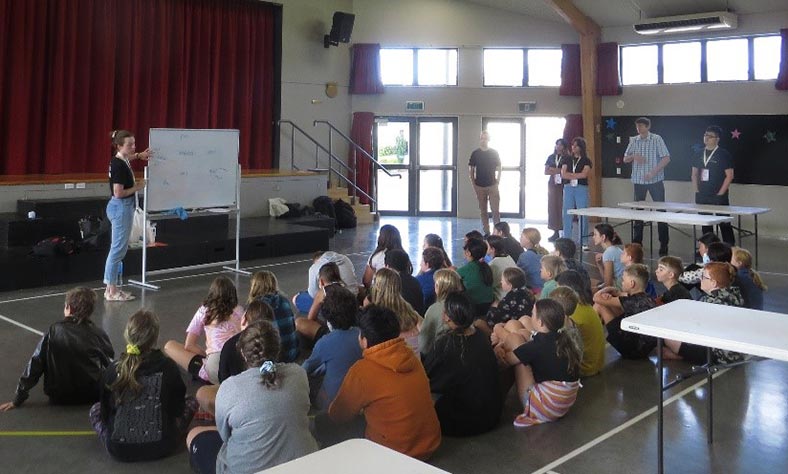
Tūhura Otago Museum-based Senior Science Engagement Co-ordinator Dr Marijn Kouwenhoven talks to students at Westbrook School about materials science
This was a rare opportunity for students to experiment with the properties of materials at the nanoscale and to meet and talk with real scientists about their research and science as a career.
I have heard nothing but praise for what you all did with our students. The teachers found it had great value, very engaging, and pitched at the right level for the students... I have been given very positive feedback from all involved.
Teacher Westbrook School
Students from John Paul College met women scientists from the MacDiarmid Institute in an informal 'People like me' workshop, where researchers shared stories about their research and career paths and answered students' questions.
Students from Westbrook School, Rotorua Primary School, Lake Rotoma School, Whangamarino School, Te Rangihakahaka and Te Koutu Māori Medium Schools dived into hands-on activities such as building balloon rockets, miniature catapults and graphite circuits, and participated in general learning about materials science and nanotechnology.
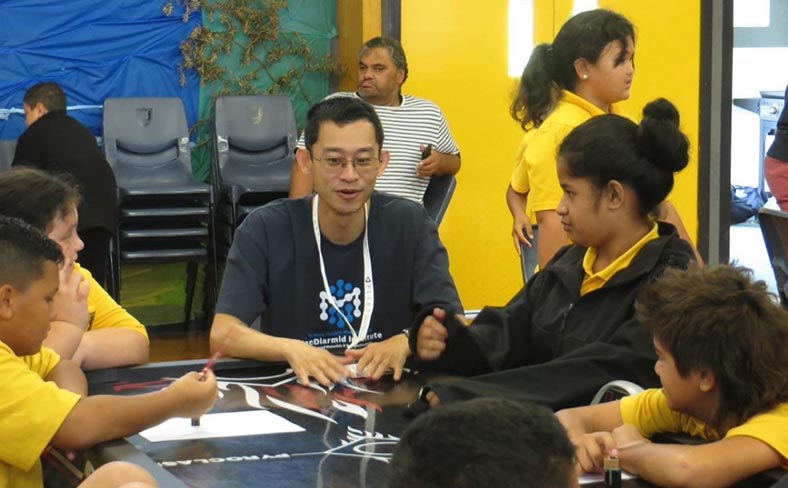
Associate Investigator Dr Luke Liu with students at Rotorua Primary School
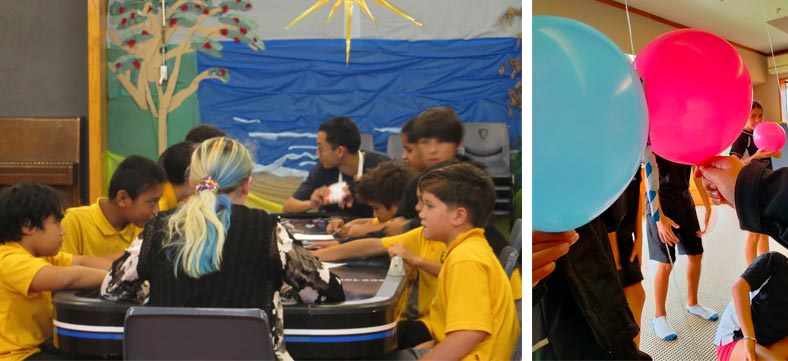
Left: Students at Rotorua Primary School exploring graphite circuits and connecting with MacDiarmid Institute students and researchers. Right: Students at Te Rangihakahaka launch balloon rockets as part of a session on mass, force, and acceleration.
What struck me most about the schools we visited was how strong and integrated the Māori culture and language was in the local education system and daily life. This includes the Māori-based science that helps them understand their environment.
Jason Major Outreach Coordinator, FLEET
Fractal fluency: Using fractal designs to promote health and performance
University of Oregon Professor Richard Taylor delivered the AMN10 public talk at Scion in Rotorua, speaking about fractal patterns in nature, using architecture and design to adapt these to home and work environments to create wellbeing and citing the neuroscience behind this effect.
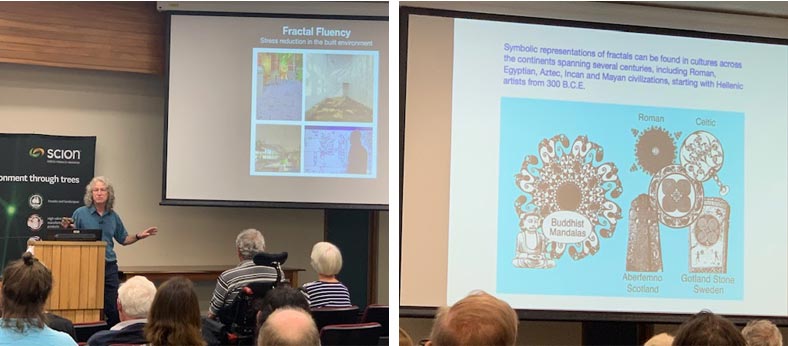
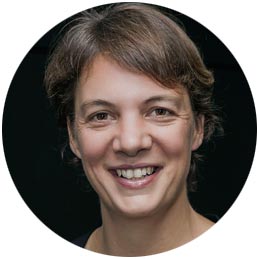
Making machines at the atomic limit
AMN10 Plenary Speaker Professor Michelle Simmons from Silicon Quantum Computing at the University of New South Wales (UNSW) spoke with Kim Hill on RNZ's 'Saturday Morning' about Professor Simmons' UNSW team's recently-built quantum processor in silicon that simulates the behaviour of a small organic molecule - a major milestone towards the world's first quantum computer.
First ever AMN commercial stream
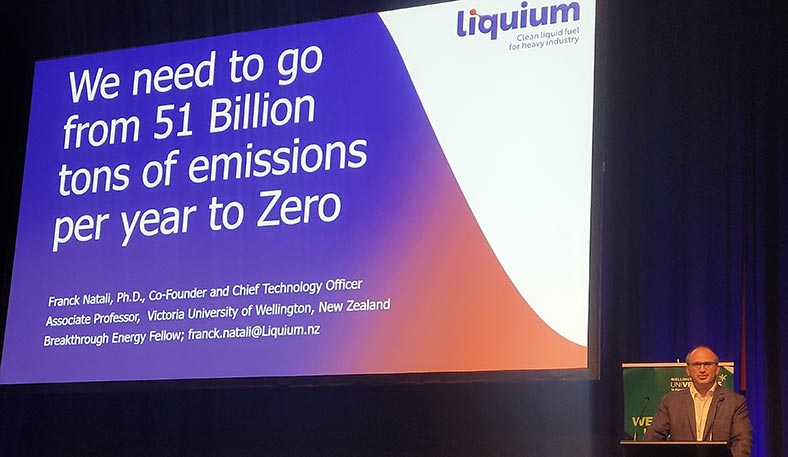
Franck Natali, co-founder of Liquium and Breakthrough Energy Fellow
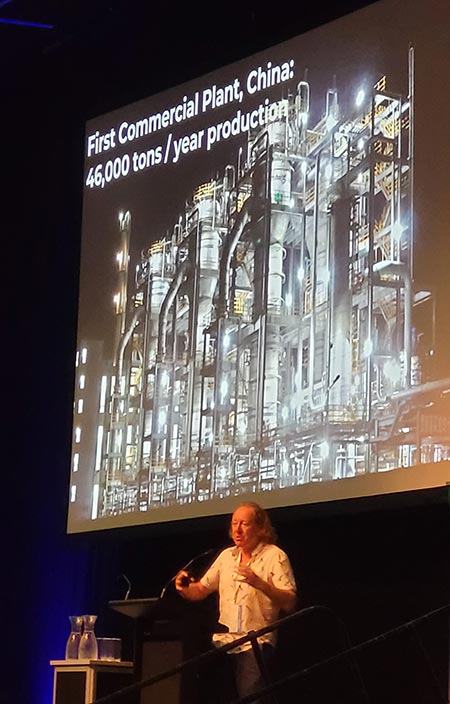
Dr Sean Simpson, co-founder of Lanzatech. Talk titled: Enabling a circular economy: carbon-negative fuel and chemical production by eliminating waste
This year for the first time we ran a full-day commercial stream alongside AMN10. The commercial stream brought together advanced materials scientists, entrepreneurs, investors, tech transfer professionals and others in the wider ecosystem and included top tier speakers such as Dr Sean Simpson (co-founder, LanzaTech), Dr Brandon Swanepoel (Vice President Technical and Project Director, Avertana), Associate Professor Franck Natali (Co-founder and Chief Technical Officer, Liquium) and early career scientists from academic and start-up groups. Commercially relevant science presentations covered a broad range of technology areas including carbon capture and utilisation and the CO2 economy, logic devices for quantum computing and extraction of raw materials from waste streams.
Alongside our university and corporate sponsors, we were pleased to have sponsors from investor groups (Matū, BridgeWest and WNT Ventures) support commercial segments of the conference. The WNT Ventures-sponsored session was a masterclass in advanced materials commercialisation delivered by Erin Rayment (Executive Director of Industry Engagement, Queensland University of Technology, and Director of Knowledge, Commercialisation Australasia).
We had a lively exhibitor hall with the following exhibitors showing off their commercial portfolios and start-ups seeking collaborations: Nanovacuum, ATA Scientific Instruments, Plasmonique, Scitek, Aspiring Materials, Risos Enterprises, Advemto, Humble Bee Bio, Litmaps, Ligar and White Rabbit Scientific.
AMN10 sponsors



